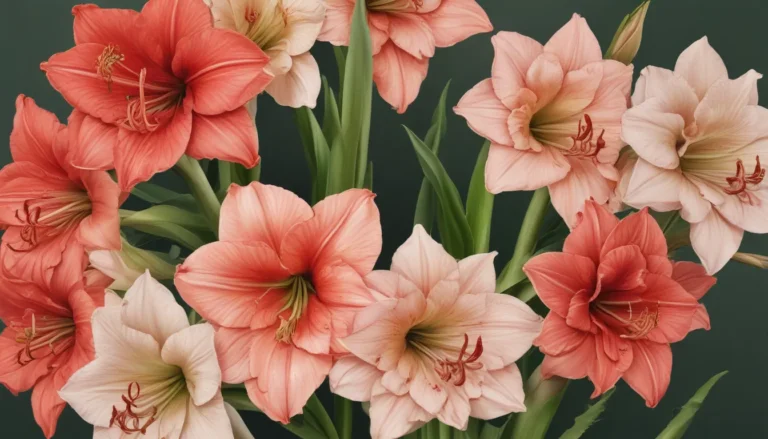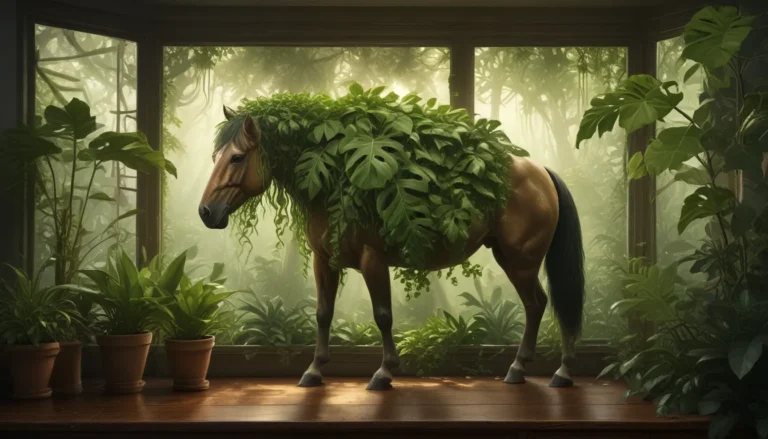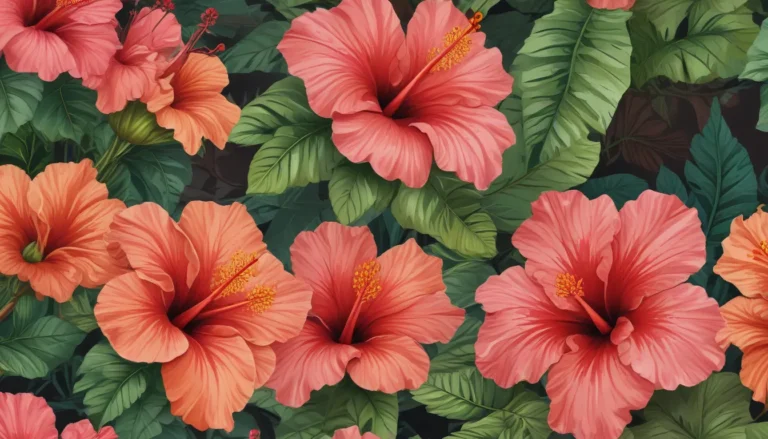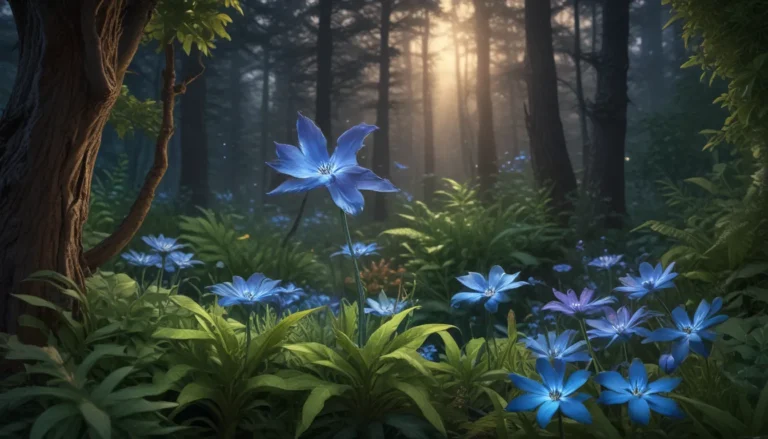The pictures we use in our articles might not show exactly what the words say. We choose these pictures to make you interested in reading more. The pictures work together with the words but don’t take their place. The words still tell you the important facts.
Tulips, with their vibrant colors and unique shapes, have captured the hearts of people around the world for centuries. Originating from Central Asia and Turkey, these perennial plants are not just beautiful flowers but also hold significant historical and cultural value. In this article, we will delve into 14 captivating facts about tulips that will enhance your appreciation for these exquisite blooms. From their symbolism to their culinary uses, there is a wealth of fascinating information to discover about tulips. So, let's embark on a journey to uncover the enchanting world of tulips!
Discovering the Magical World of Tulips
Tulips have a rich and storied history that dates back centuries. These flowers have been associated with love and royalty, making them a symbol of affection and elegance. During the Ottoman Empire, giving a tulip was a declaration of love, while in the Netherlands in the 17th century, tulips were so valuable that they were used as a form of currency among the wealthy elite.
The Origins of Tulips: A Journey from the Middle East to Europe
While tulips are commonly linked to the Netherlands, their roots can be traced back to the Middle East, specifically the Ottoman Empire, which is present-day Turkey. These exquisite flowers were introduced to Europe in the 16th century, where they flourished and became a symbol of beauty and sophistication.
A Kaleidoscope of Colors: Exploring the Diversity of Tulips
One of the most captivating aspects of tulips is their wide array of colors. From vibrant reds and pinks to soft purples and yellows, tulips come in a spectrum of hues to suit every preference. Some varieties even boast unique color patterns such as variegated petals or flame-like streaks, adding to their allure.
The Allure of the Black Tulip: A Rare and Coveted Variety
The black tulip, though not truly black, exudes a dark purple or maroon hue, making it a highly sought-after variety among enthusiasts. This rare bloom symbolizes luxury and elegance, thanks to its mystical appearance and scarcity.
Embracing the Cold Dormancy: Nurturing Tulips to Bloom
Tulips require a period of cold dormancy to thrive and bloom. Typically, they need exposure to cold temperatures, usually during winter, to stimulate their growth and flower formation. Once this dormancy period ends, tulips begin to sprout and grace us with their beautiful blossoms.
From Garden to Table: Exploring the Edible Side of Tulips
Intriguingly, tulips are not just a feast for the eyes but can also tantalize the taste buds. The petals of certain tulip varieties are edible and can be incorporated into salads, desserts, and other culinary creations. However, it's essential to ensure that you research the safety of the tulip variety before indulging in these floral delicacies.
Resilience in Beauty: The Unique Growth of Cut Tulips
Unlike some flowers that wither soon after being cut, tulips possess the remarkable ability to continue growing even in a vase. They elongate towards the light and adjust their direction to bask in sunlight, making them a preferred choice for floral arrangements that exude elegance and vitality.
The Dutch Delight: A Celebration of Tulips in the Netherlands
The Netherlands is renowned for its breathtaking tulip fields, particularly in the iconic Keukenhof gardens. Dutch culture deeply appreciates tulips, culminating in the celebration of National Tulip Day every January. The vibrant hues of tulips paint a picturesque landscape that enchants visitors from around the globe.
The Artistic Symbolism of Tulips in Culture and Literature
Tulips have served as poignant symbols in various art forms and literary works throughout history. They represent beauty, passion, and mortality, lending a rich tapestry of meanings to these captivating blooms. Notable examples include the painting "Tulip Mania" by Jean-Baptiste Monnoyer, which captures the lush allure of tulips.
Unraveling the Tulip Mania: A Historic Financial Tale
During the 17th century in the Netherlands, tulip bulbs were deemed more precious than gold, sparking a period known as "Tulip Mania." This speculative frenzy led to exorbitant prices for rare tulip bulbs, culminating in a financial crash that reverberated through history as the first recorded financial bubble.
Embracing Diversity: Exploring the Varied Symbolism of Tulips
Despite being commonly linked to love and beauty, tulips hold diverse meanings across different cultures. In Persian culture, red tulips symbolize perfect love, while yellow tulips embody sunshine and cheerful thoughts. These varying symbolisms add depth and intrigue to the enchanting world of tulips.
A Blooming Tradition: The Perennial Charm of Tulips
Tulips are perennial flowers that bloom year after year, adding a touch of vibrancy to gardens and landscapes. While their blooms may diminish over time, many gardeners opt to replant or introduce new tulip bulbs regularly to maintain a colorful and lively display.
Embracing Global Adoration: Tulips as a Beloved Flower Worldwide
A global survey reveals that tulips rank as the third most popular flower globally, following roses and chrysanthemums. Their allure lies in their versatility, vibrant colors, and the wide range of varieties that cater to diverse tastes, making them a cherished choice for gardens, bouquets, and gifts.
A Historic Financial Tale: The Legacy of Tulip Mania
Tulips, with their captivating beauty, inspired history's first recorded financial bubble during the Dutch Golden Age in the 17th century. The demand for rare tulip bulbs soared to unprecedented levels, leading to a speculative frenzy that ultimately resulted in the collapse of the tulip market, known as "Tulip Mania."
Conclusion: The Enduring Magic of Tulips
In conclusion, tulips stand not just as beautiful flowers but as timeless symbols of love, beauty, and cultural significance. Whether you're an avid gardener or an admirer of nature's marvels, exploring the captivating world of tulips offers a delightful journey into their rich heritage. By understanding their lifecycle, symbolism, and cultivation practices, you can fully appreciate the magic that tulips bring to gardens and floral arrangements. So, next time you encounter a bed of tulips or receive a bouquet of these stunning blooms, take a moment to revel in their timeless beauty and reflect on the captivating facts that make them truly special.
FAQs: Unveiling the Enigmatic World of Tulips
- How long do tulips bloom?
-
Most tulips bloom for about one to two weeks, depending on the variety and prevailing weather conditions. However, some may have a shorter or longer blooming period.
-
Can I grow tulips in containers?
-
Yes, tulips can thrive in containers, provided they have proper drainage and quality potting soil. Ensure regular watering, ample sunlight, and suitable care practices to nurture healthy growth.
-
What is the best time to plant tulip bulbs?
-
Tulip bulbs are ideally planted in the fall, typically between September and November, before the ground freezes. This timing allows the bulbs to establish roots before winter and bloom gloriously in the spring.
-
How do I safeguard my tulips from pests and diseases?
-
Maintain cleanliness around your tulips, eliminate weeds, and adopt organic pest control methods like companion planting to deter pests. Adequate watering and good air circulation can contribute to disease prevention.
-
Can I propagate tulips from seeds?
-
While it is possible to grow tulips from seeds, it is a challenging and time-consuming process. Seedlings may take several years to mature and produce flowers, making planting tulip bulbs a more practical choice for most gardeners.
-
What are some popular tulip varieties to consider?
-
Explore a plethora of tulip varieties, including Single Early Tulips, Parrot Tulips, Fringed Tulips, and Double Tulips, each offering unique characteristics that enhance the beauty of any garden.
-
Do tulips hold symbolic meanings based on their colors?
-
Yes, tulips convey various meanings depending on their hues. Red tulips symbolize love and passion, yellow tulips represent happiness and joy, while white tulips signify purity and forgiveness, among others.
-
Can I cultivate tulips in shaded areas?
-
While tulips prefer full sun to partial shade, excessive shade may impact their growth and bloom quality. Opt for locations with at least six hours of direct sunlight to ensure robust growth and vibrant blooms.
-
How can I extend the lifespan of cut tulips?
-
To prolong the life of cut tulips, trim their stems at an angle, place them in clean water with floral preservatives, and change the water regularly. Avoid exposure to direct sunlight, heat sources, or ethylene-releasing fruits that can shorten their longevity.
-
Is it possible to divide and transplant tulip bulbs?
- Tulip bulbs can be divided and transplanted after the foliage has withered. Carefully dig up the bulbs, separate any offsets, and replant them in a new location with well-drained soil to stimulate healthy growth and blooming.
Tulips enchant with their beauty and hold a legacy steeped in history and culture. Whether you're drawn to their vibrant colors, symbolic meanings, or culinary potential, exploring the world of tulips unveils a tapestry of wonder and fascination. Embrace the allure of these captivating blooms and let their timeless charm brighten your days with a touch of natural elegance.






